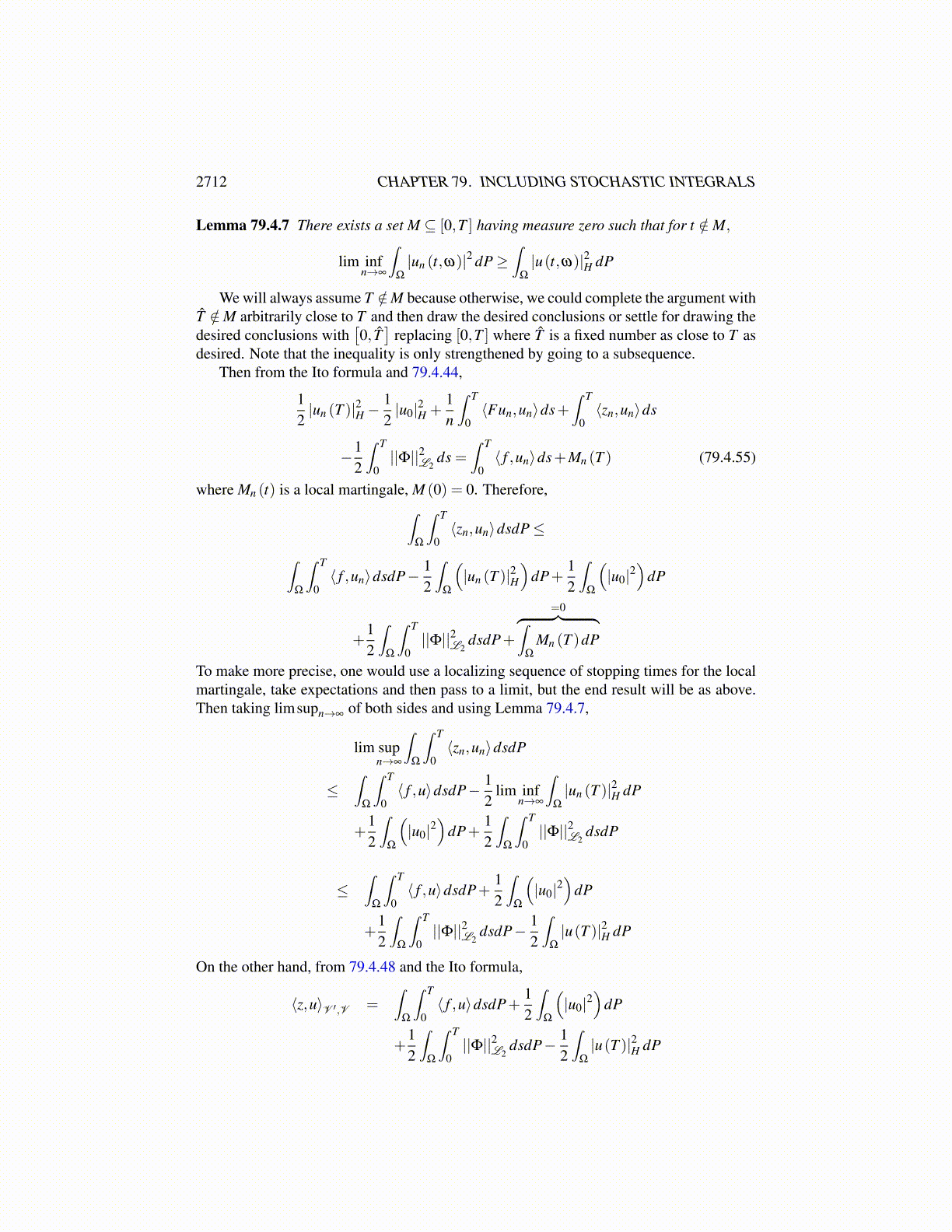
2712 CHAPTER 79. INCLUDING STOCHASTIC INTEGRALS
Then
P
(ω : sup
t∈[0,T ]
∥∥∥∥unk (t)+∫ t
0znk ds−
(u(t)+
∫ t
0zds)∥∥∥∥
U ′> 2−k
)
≤ 2k∫
Ω
∫ T
0
1nk
∣∣∣∣Funk
∣∣∣∣dsdP < 2−k
Therefore there is a subsequence still denoted with n such that
P
(ω : sup
t∈[0,T ]
∥∥∥∥un (t)+∫ t
0znds−
(u(t)+
∫ t
0zds)∥∥∥∥
U ′> 2−n
)≤ 2−n
It follows that there is a set of measure zero N such that if ω /∈ N, then ω is in only finitelymany of the above sets. That is, for ω /∈ N,
supt∈[0,T ]
∥∥∥∥un (t,ω)+∫ t
0zn (s,ω)ds−
(u(t,ω)+
∫ t
0z(s,ω)ds
)∥∥∥∥U ′
< 2−n
for all n large enough.
Lemma 79.4.6 There is a set of measure zero N, an enlargement of the earlier set suchthat for ω /∈ N, and a suitable subsequence, still denoted with n, such that
limn→∞
(un (t,ω)+
∫ t
0zn (s,ω)ds
)= u(t,ω)+
∫ t
0z(s,ω)ds in U ′ (79.4.51)
for each t ∈ [0,T ]. In addition to this, for ω /∈ N,∥∥∥∥un (t,ω)−u0 (ω)+∫ t
0(zn (s,ω)− f (s,ω))ds−
∫ t
0ΦdW
∥∥∥∥U ′→ 0 (79.4.52)
Proof: The formula 79.4.51 follows from the above discussion. The second claimfollows from the first and the equation satisfied by u 79.4.49.
In the situation of 79.4.44, can we conclude that for the subsequence of Lemma 79.4.6,
lim supn→∞
⟨zn,un−u⟩U ′,U ≤ 0? (79.4.53)
Let {ek} be a complete orthonormal set in H, dense in H, with each vector in U . Thus
un (t,ω) = ∑k(un (t,ω) ,ek)H ek, |un (t,ω)|2 = ∑
k(un (t,ω) ,ek)
2 . (79.4.54)
The following claim is the key idea which will yield 79.4.53.Claim: liminfn→∞ (un (t,ω) ,ek)
2 ≥ (u(t,ω) ,ek)2 for a.e.(t,ω).
Proof of claim: Let Bε be those (t,ω) such that
lim infn→∞
(un (t,ω) ,ek)2 ≤ (u(t,ω) ,ek)
2− ε.